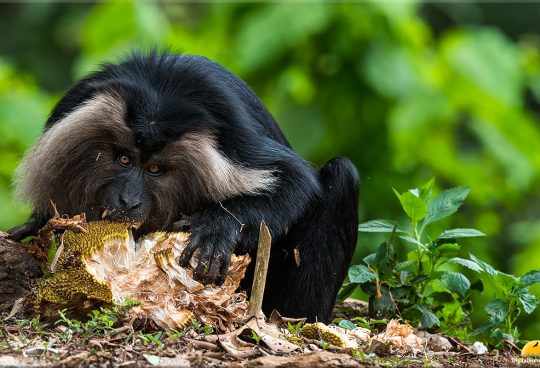The blue dacnis or turquoise honeycreeper (Dacnis cayana) is a small passerine bird. This member of the tanager family is found from Nicaragua to Panama, on Trinidad, and in South America south to Bolivia and northern Argentina. It is widespread and often common, especially in parts of its South American range. It occurs in forests and other woodlands, including gardens and parks. The blue dacnis is 12.7 cm long and weighs 13 g. Despite its alternative name, it is not a honeycreeper, which are longer-billed. The adult male is turquoise blue with a black around the eyes, and on the throat and back. The wings and tail are black, edged with turquoise. The female and immature are mainly green with a blue head, paler green underparts and green-edged brown wings. These are social birds which eat mainly insects gleaned from foliage, flowers or bromeliads. Fruit is often taken and usually swallowed whole, but nectar is rarely consumed. The blue dacnis’s call is a thin tsip.
The Blue Dacnis is a stunning inhabitant of humid lowland forest from Honduras to south to northeastern Argentina. The Blue Dacnis is sexually dimorphic: the male primarily is bright turquoise blue with a black throat, back and tail, whereas the female is mostly green with a blue crown. Blue Dacnis are most often found foraging for nectar and insects in the tops of trees along forest edges or small clearings. When foraging for insects, the Blue Dacnis usually takes its prey from leaves, often with acrobatic maneuvers; the Blue Dacnis frequently pays particular attention to brown spots on green leaves, apparently seeking out leaf damage that might indicate the presence of an insect. Blue Dacnis is classified as least concern by IUCN.
![]()






Sorry, the comment form is closed at this time.